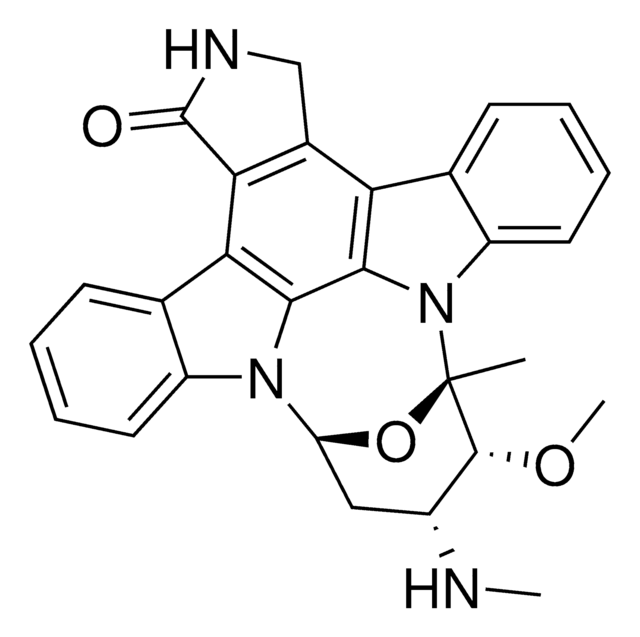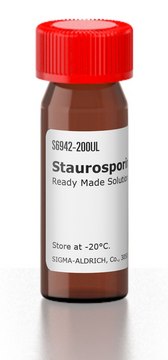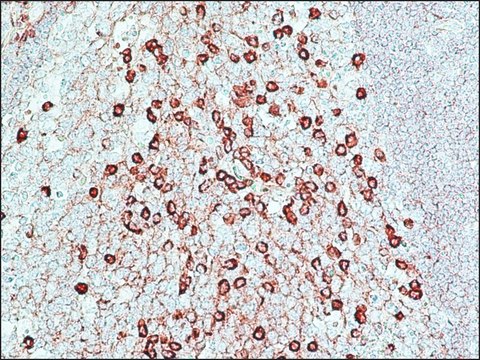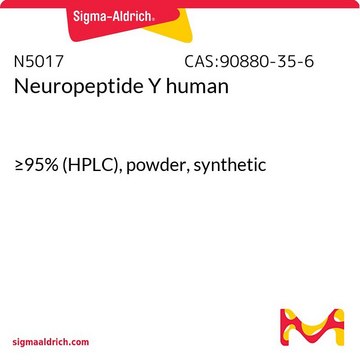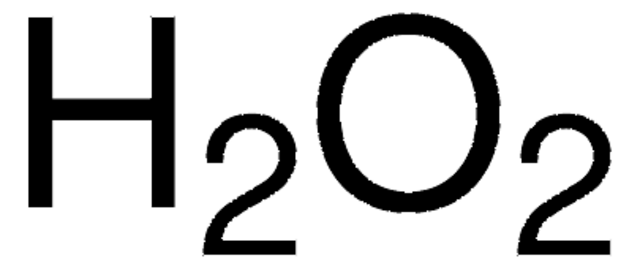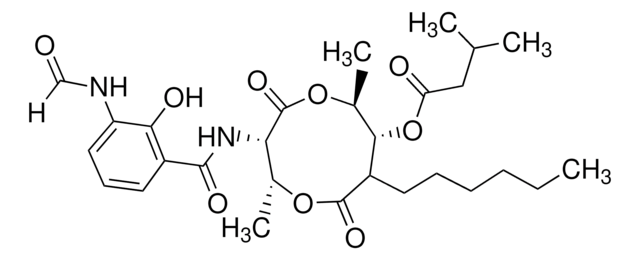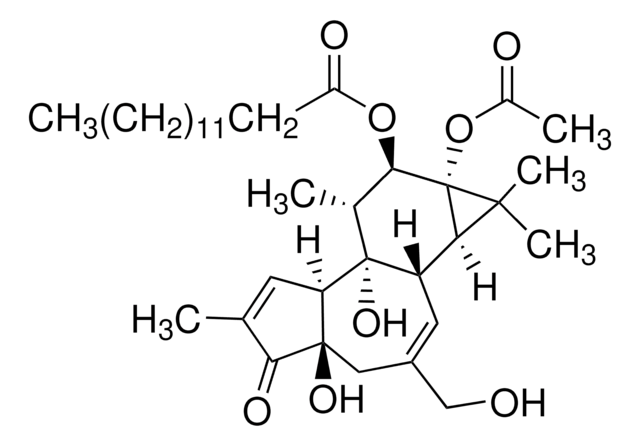S4400
Staurosporine
from Streptomyces sp., ≥98% (HPLC), film, protein kinase inhibitor
Synonym(s):
Staurosporine, Antibiotic AM-2282
About This Item
Recommended Products
Product Name
Staurosporine from Streptomyces sp., ≥98% (HPLC), film
biological source
Streptomyces sp.
Quality Level
Assay
≥98% (HPLC)
form
film
mp
288-291 °C
solubility
DMSO: soluble
H2O: insoluble
ethanol: soluble
methanol: soluble
antibiotic activity spectrum
neoplastics
Mode of action
enzyme | inhibits
storage temp.
2-8°C
SMILES string
CN[C@@H]1C[C@@H]2O[C@@](C)([C@@H]1OC)n3c4ccccc4c5c6CNC(=O)c6c7c8ccccc8n2c7c35
InChI
1S/C28H26N4O3/c1-28-26(34-3)17(29-2)12-20(35-28)31-18-10-6-4-8-14(18)22-23-16(13-30-27(23)33)21-15-9-5-7-11-19(15)32(28)25(21)24(22)31/h4-11,17,20,26,29H,12-13H2,1-3H3,(H,30,33)/t17-,20?,26-,28+/m1/s1
InChI key
HKSZLNNOFSGOKW-ZGQXJOJZSA-N
Looking for similar products? Visit Product Comparison Guide
General description
Application
Biochem/physiol Actions
Features and Benefits
Signal Word
Danger
Hazard Statements
Precautionary Statements
Hazard Classifications
Aquatic Chronic 4 - Carc. 1B - Muta. 1B - Repr. 2
Storage Class Code
6.1C - Combustible acute toxic Cat.3 / toxic compounds or compounds which causing chronic effects
WGK
WGK 3
Flash Point(F)
Not applicable
Flash Point(C)
Not applicable
Personal Protective Equipment
Regulatory Information
Choose from one of the most recent versions:
Certificates of Analysis (COA)
Don't see the Right Version?
If you require a particular version, you can look up a specific certificate by the Lot or Batch number.
Already Own This Product?
Find documentation for the products that you have recently purchased in the Document Library.
Articles
Protein-based drug transporters are expressed in Sf9 cells. Understanding the specific mechanisms of tumor cell transporters is an essential aspect of chemotherapeutic drug design.
Discover Bioactive Small Molecules for ADME/Tox
Our team of scientists has experience in all areas of research including Life Science, Material Science, Chemical Synthesis, Chromatography, Analytical and many others.
Contact Technical Service